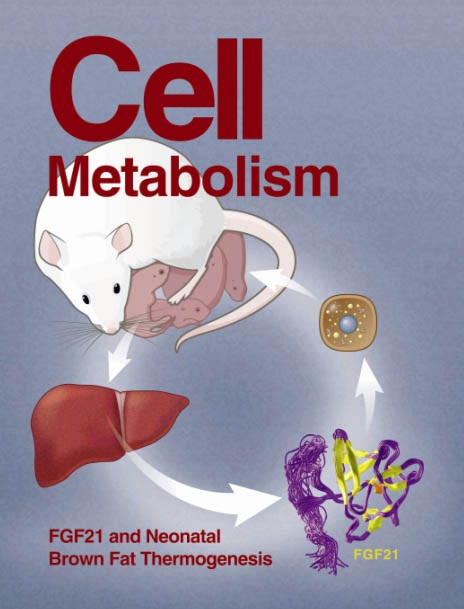Shivering, but not adipose tissue thermogenesis, increases as a function of mean skin temperature in cold-exposed men and women
IF 30.9
1区 生物学
Q1 CELL BIOLOGY
引用次数: 0
Abstract
Skin cooling results in the activation of heat-generating mechanisms to counteract heat lost to the environment. Here, we aim to understand the extent to which variations in cold-stimulated heat production may be driven by differences in the contribution of shivering and non-shivering thermogenesis (NST) and the interaction with biological sex. Using a novel mean skin temperature clamping technique in healthy men and women, our data show that cold-stimulated heat production rises with increasing shivering and myocardial oxidative metabolism in a skin temperature-dependent fashion. Shivering and myocardial thermogenesis were also moderately associated. By contrast, adipose tissue NST did not increase in a linear manner to reductions in skin temperature. Men and women displayed similar thermoregulatory responses, although women presented more pronounced shivering through a greater recruitment of lower-body muscles and a greater number of motor units recruited. Thus, shivering contributes proportionally to cold-induced thermogenesis, whereas adipose tissue thermogenesis displays an all-or-none response.

暴露在寒冷环境中的男性和女性,随着平均皮肤温度的增加,寒战(而非脂肪组织产热)会增加
皮肤冷却导致热产生机制的激活,以抵消热量流失到环境中。在这里,我们的目的是了解冷刺激产热的变化在多大程度上可能是由寒战和非寒战产热(NST)的贡献差异以及与生物性别的相互作用驱动的。在健康男性和女性中使用一种新颖的平均皮肤温度夹紧技术,我们的数据显示,冷刺激的产热以皮肤温度依赖的方式随着颤抖和心肌氧化代谢的增加而增加。寒战和心肌产热也中度相关。相比之下,脂肪组织NST并没有随着皮肤温度的降低而线性增加。男性和女性表现出相似的体温调节反应,尽管女性表现出更明显的颤抖,因为下半身肌肉和运动单元的调动更多。因此,颤抖对冷诱导产热的贡献成比例,而脂肪组织产热则表现出全有或全无的反应。
本文章由计算机程序翻译,如有差异,请以英文原文为准。
求助全文
约1分钟内获得全文
求助全文
来源期刊

Cell metabolism
生物-内分泌学与代谢
CiteScore
48.60
自引率
1.40%
发文量
173
审稿时长
2.5 months
期刊介绍:
Cell Metabolism is a top research journal established in 2005 that focuses on publishing original and impactful papers in the field of metabolic research.It covers a wide range of topics including diabetes, obesity, cardiovascular biology, aging and stress responses, circadian biology, and many others.
Cell Metabolism aims to contribute to the advancement of metabolic research by providing a platform for the publication and dissemination of high-quality research and thought-provoking articles.
 求助内容:
求助内容: 应助结果提醒方式:
应助结果提醒方式:


